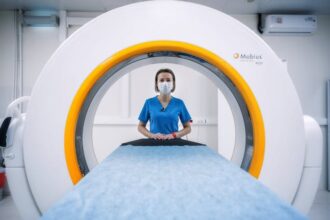Your sleep tracker might reveal insights into chronic conditions like diabetes, sleep apnea, and acute illnesses such as COVID-19. This finding emerges from a detailed data analysis from five million nights of sleep involving around 33,000 individuals. Researchers identified five primary sleep phenotypes, further divided into 13 subtypes, enhancing our understanding of how sleep patterns relate to health. Published in the journal npj Digital Medicine on June 20, 2024, the study shows that transitions between different sleep phenotypes provide two to ten times more relevant health data than analyses based solely on a person’s average sleep pattern.
The data utilized in this study was collected via the Oura Ring, a bright ring that monitors sleep and skin temperature, among other metrics. Researchers tracked the health and sleep of individuals over several months, observing the presence of chronic health issues and illnesses such as COVID-19 and the flu. They discovered that individuals often shifted between sleep phenotypes over time, reflecting changes in their health conditions. This movement through different sleep phenotypes effectively created a travel log of an individual’s health through the landscape of sleep data.
Benjamin Smarr, one of the study’s senior authors and a faculty member at the University of California, San Diego, emphasized the significance of slight variations in sleep quality. He noted that these subtle changes, which might be overlooked in routine screenings or average nightly data, could be crucial in identifying health risks. This points to wearable technology’s valuable role in uncovering otherwise undetectable health risks.
The researchers believe tracking sleep changes over long periods on a population scale could reveal crucial public health insights. These could include early warnings for chronic illnesses or increased vulnerabilities to infections. The study utilized the TemPredict dataset, initially compiled from Oura Ring data during the 2020 COVID-19 pandemic. Led by Smarr and Professor Edward Wang, along with contributions from Professor Ashley E. Mason, a sleep clinician, the study expands our understanding of sleep’s relationship with health.
The five main sleep phenotypes identified range from what is considered ‘normal’ sleep, where individuals consistently sleep around eight hours nightly, to significantly disrupted sleep patterns, where individuals only manage short sleep periods each night. This classification helps track how individuals move between these patterns over time, providing a richer picture of their overall health.
This novel approach to studying sleep patterns significantly advances sleep research. Previous studies could not track changes over time or directly link them to health outcomes. By leveraging detailed, longitudinal sleep data, this research opens new avenues for the early detection of health issues through sleep dynamics, underscoring the critical role sleep monitoring can play in our overall health management.
More information: Varun K. Viswanath et al, Five million nights: temporal dynamics in human sleep phenotypes, npj Digital Medicine. DOI: 0.1038/s41746-024-01125-5
Journal information: npj Digital Medicine Provided by University of California San Diego








